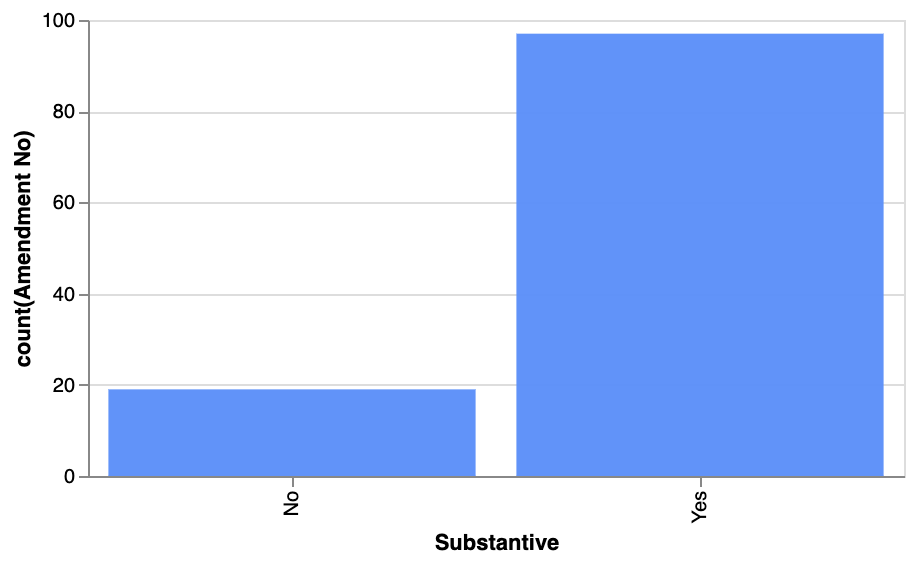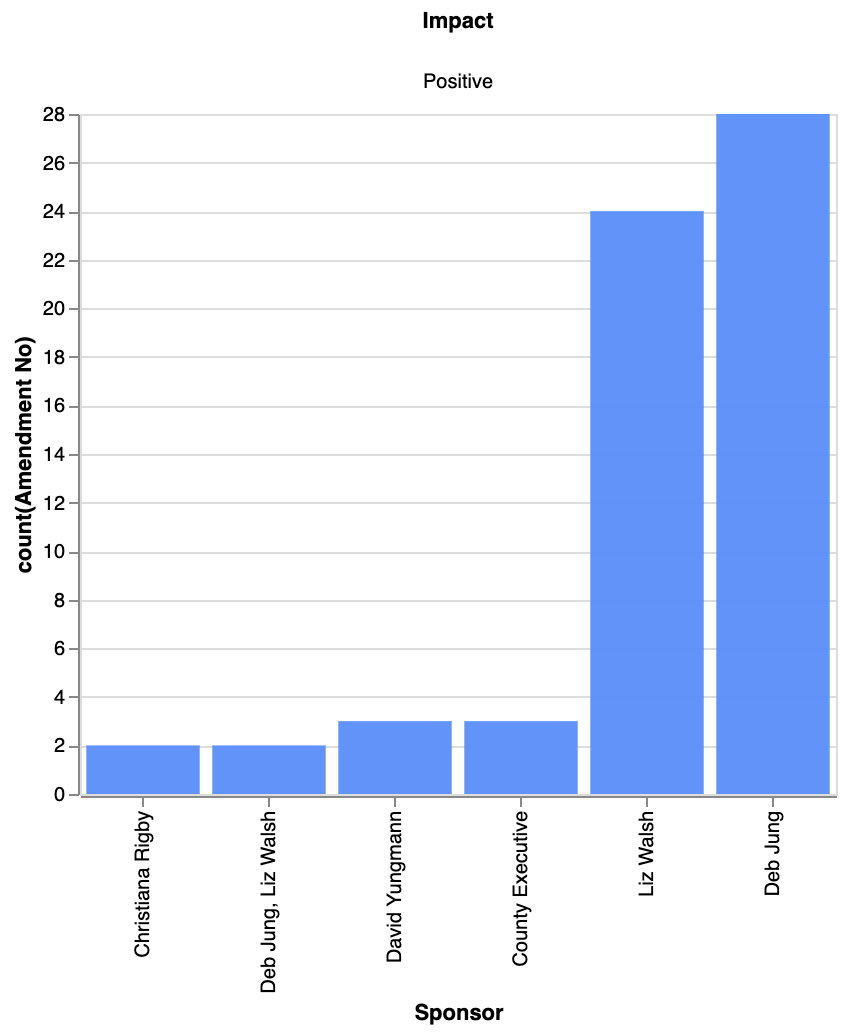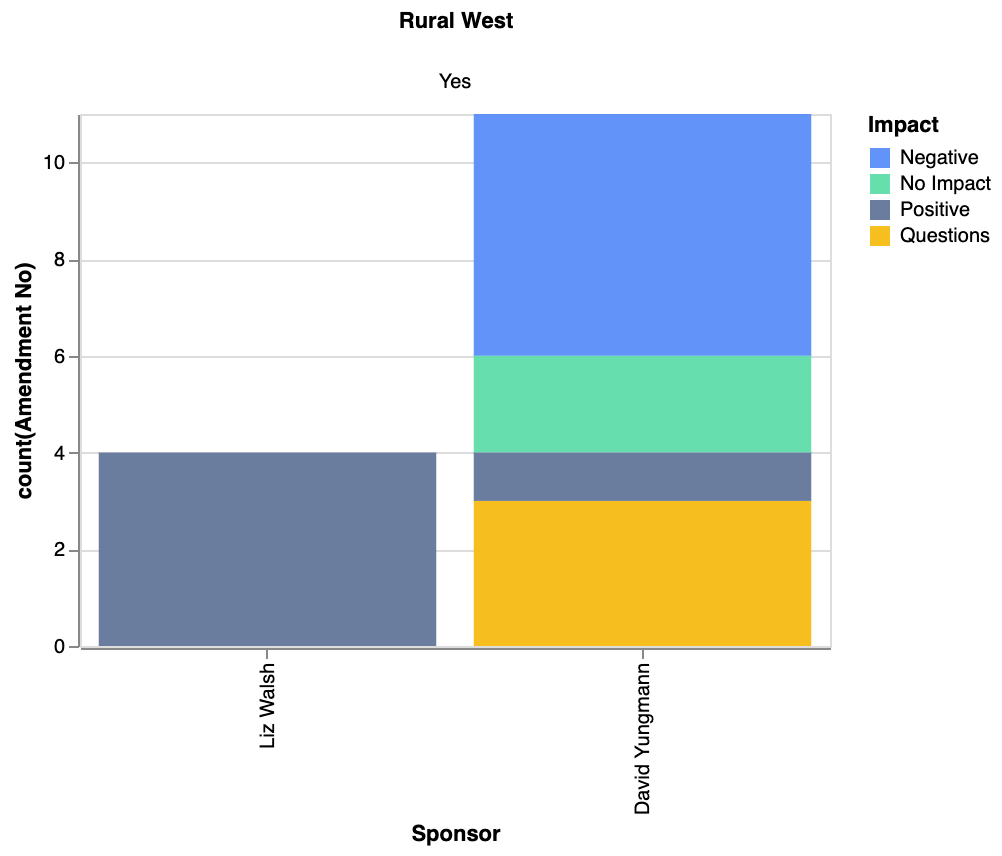Complete Analysis of the Amendments to Howard County's Draft General Plan HoCo By Design
Hiruy Hadgu
Note: this combines parts 1 thru 4 of a series of reports analyzing the 116 amendments introduced by the county council and county executive. The amendments maybe found here
Introduction
The draft General Plan was written by developers and for developers. The plan assumes that 59,000 jobs will be created in Howard County over the next twenty years. This number is reached by using the average annual number of jobs created in the past ten years (3,000 per year) and assuming that 3,000 jobs will be created in the next 20 years. No other scientific or technical basis exists for this number.
The county council has introduced 116 amendments to the legislation to the draft General Plan, CB28-2023.
Overview of the Amendments
Nearly 100 of the 116 amendments to the draft General Plan, HoCo By Design can be considered substantive as they deal with more than a technical or typographical change.
Notably, not a single amendment offered by Councilmember Opel Jones.
Of the nearly 100 substantive amendments, predictability so, most of the negatively impacting amendments are offered by the County Executive. Certain amendments introduced by the County Executive, and Councilmembers Christiana Rigby and David Yungmann were either vague or led to additional questions.
Most of the positively impacting amendments were introduced by Councilmembers Liz Walsh and Deb Jung.
APFO, Infrastructure and Annual Unit Allocations
The Adequate Public Facilities Ordinance (APFO) is a law that is intended to pace the rate of residential development with infrastructure such as schools and roads. It was amended in 2018 to require that elementary, middle, and high schools are considered “open” if their projected enrollment is below 105%, 110%, and 115%, respectively. Before 2018 these numbers where much higher and capacity testing for high schools was nonexistent. So much so that some schools reached nearly 150% of capacity.
At least 33 amendments were introduced to either weaken/dismantle or strengthen APFO. The following chart shows a distribution of the number of amendments introduced that have various impacts on APFO. For example, Councilmembers Liz Walsh and Deb Jung introduced 7 and 12 amendments, respectively, that would impact APFO positively.
Dismantling APFO
The draft General Plan includes several proposals that seek to weaken APFO from proposing various exemptions to completely changing the purpose of the ordinance by suggest that the purpose of APFO is to “facilitate growth.” Amendments to further weaken or dismantle it were introduced by the County Executive and Councilmember Christiana Rigby.
Lets start with the doozy. Councilmember Rigby introduced Amendment 57, which seeks to replace the Adequate Public Facilities Ordinance (APFO) with a so-called “Exceptional Community Ordinance.” The vague and made-up term provides no pathway to address the county’s exceptionally pressing infrastructure demands and declining level of service.
Strengthening APFO
Councilmember Deb Jung introduced Amendments 73, 80, 104, and 106 which seek to strengthen APFO. Amendment 73 removes a proposal that directs the APFO task force to develop recommendations as to the applicability of APFO to accessory dwelling unit creation or construction.
Amendment 80 amends language that reframes the purpose of APFO. The draft General Plan seeks to suggest that APFO “supports future growth and transportation patterns.” This is a distorted definition and purpose. APFO is supposed to pace the rate of residential development with the desired level of service and infrastructure needs. Significantly, this amendment removes a call for an evaluation of granting automatic or limited exceptions to incentivize affordable, age-restricted, and missing middle housing, remove an examination of alternatives to APFO waiting periods, and remove the development of fee-based funding methods.
Amendments 104 proposes to “add a revision of the Zoning Code to consider school capacity when granting ZRAs and in cases before the Zoning Board” while Amendment 106 calls for an evaluation of data on existing school conditions.
APFO Allocation Charts Comparison
The APFO allocation chart in the draft General Plan calls for an annual average allocation of 1,580 units spread across Downtown Columbia, Activity Centers, Other Character Areas, Rural West, Green Neighborhood, and Affordable Housing. Councilmember Rigby, thru Amendment 56, seeks to increase this allocation to 1,780 by eliminating the Green Neighborhood “set aside incentive” and increasing the Affordable Housing “set-aside incentive.”
Councilmember Liz Walsh introduced Amendment 65, which reduces the overall unit allocations to 1,430, while eliminating the idea of density bonus and other previously failed ideas as incentives for preservation and restoration measures. Specifically, the Green Neighborhood set-aside is an additional allocation that the county says could increase the supply of affordable housing units above and beyond what is required. In other words, the developer is awarded this extra density if the extra units adhere to certain standards. In the past these measures have failed as the developer can get out of the obligation by seeking exemptions while still retaining the bonus allocation.
In Amendment 70, Councilmember Walsh retains the set-aside mechanism to incentivize affordable housing to those making less than 60% of Area Median Income (AMI). Green Neighborhood is eliminated while the number of allocations in “Other Character Areas” is reduced by 265 units. The total average annual allocations are reduced to 1,315.
Councilmember Jung maintains the average annual 1,580 unit allocations by reducing the Activity Center allocations from 600 to 400 and replacing the Green Neighborhood category with “Affordable for Purchase Units” and setting aside 250 units for this purpose. The other Affordable Housing Unit allocation of 250 is set aside for rentals.
Councilmember David Yungmann introduced Amendment 6, which would “[i]mplement a required minimum allocation of units for seniors and people with a disability in any development receiving an APFO waiver or a Payment in Lieu of Taxes, or other form of local funding.”
Proposals to Add New Infrastructure Categories to APFO
Councilmember Walsh introduced Amendment 97, which “[d]irect the Adequate Public Facilities Ordinance (APFO) committee to develop recommendations as to the applicability of APFO to local emergency response and in-patient care facilities.”
Overall, if any of the amendments introduced by Councilmembers Walsh and Jung are passed, the draft General Plan would be vastly improved.
Affordable Housing Tenant Protections
The development lobby’s influence on housing advocacy leaders in Howard County is abundantly clear. The housing lobby correctly points out that housing is expensive and proposes to make it more affordable by increasing supply. To that end there were several public testimonies that called for an allocation of 2,000 units annually with 25% set aside for those making less than 60% AMI.
The draft General Plan proposed to add over 12 thousand rental units over 18 years -nearly half of the total units. In other words, the county wants to “increase” affordability by adding large rental apartments similar to those built in Downtown Columbia. It is worth noting that Howard Hughes Corporation has yet to deliver on the hundreds of affordable units under its obligation in the Downtown Columbia Plan.
Homeownership versus Rentals
Councilmember Rigby’s Amendment 14 proposes to “Incentivize the production of Low Income Housing Units (LIHU) and Disability Income Housing Units (DIHU) housing units affordable to low- and moderate-income households, beyond what is currently required by the Moderate Income Housing Unit (MIHU) program” and “Establish a goal of zero net loss of existing housing affordable to households with income below 60% of the area median income while adding new affordable units to the County’s housing inventory.”
In 2019, the County Executive signed into law legislation that would allow developers to reduce their affordable housing obligations. In CB50-2019, developers that request to provide DIHU’s would be allowed to meet the MIHU requirement with fewer units. For example, 1 DIHU on-side for every 3 to 4 MIHUs required by the zoning regulations. No attempt is made in Councilmember Rigby’s legislation to address this significant giveaway.
Similarly, the County Executive proposes Amendment 44, which would “[P]reserve mobile home parks as affordable housing opportunities when possible (emphasis added) and continue to support their revitalization. If redevelopment occurs, the County should strive for a minimum of a one-to-one replacement of affordable units and evaluate ways to provide relocation assistance that maintains social and familial connections.”
There is a proposal in Amendment 52, proposed by the County Executive, to “[E]stablish a working group that evaluates and sets goals for the targeted incentive program for affordable and accessible housing and establish criteria for the Affordable Housing set aside in the APFO Allocations Chart.” This amendment does two things, it coninues to use affordable housing as a wedge issue to dismantle APFO and it establishes another task force thereby kicking the can on the issue of providing affordable housing.
Councilmember David Yungmann’s Amendment 15, creates a new policy statement to promote home ownership by building on existing programs that are geared toward helping buyers become homeowners, develop methods that encourage ownership over renting, and expand public awareness of various programs to assist home buyers.
Councilmember Deb Jung’s Amendment 100, also encourages home ownership by proposing an implementing action to “Consider establishing housing scenarios that support for-sale units to households making 60% or less of AMI that are financially feasible for the developers. Require mixed use and activity centers to reflect home-ownership opportunities.”
Tenant Protections
Councilmember Liz Walsh proposes Amendment 70, which requires allocation of 300 units to income less than 60% AMI by reducing allocations in other categories. And requires the county process is adjusted to meet a certain targeted affordable housing annually.
It also adds a whole host of implementing actions to advance tenant protections and expand affordable housing.
Specifically:
Continue rental assistance programs begun during the COVID-19 pandemic.
Expand and re-allocate Housing Commission inventory until housing supply gaps at low-income and moderate-income affordability levels meaningfully diminish.
Expand the locally enacted County right-of-first refusal to include mobile home parks and transitional housing, and to make available to the Commission significant additional funding for acquisition and rehabilitation.
Legislate rent stabilization measures similar to those already enacted in neighboring counties.
Establish corporate landlord and rental property registries, to include disclosure of unit sizes, rental rates, and associated fees assessed.
Enforce and expand local inclusionary zoning and other requirements specific to the count and cost of affordable units provided in existing and new rental communities.
Preserve, rehabilitate and enhance existing inventory of more affordable privately-held multi-family rental communities by acceptance of payments in lieu of taxes (PILOTs).
Support State-level reforms to landlord-tenant law.
Councilmember Deb Jung’s Amendment 78 proposes to “expand our landlord-tenant division and the enforcement component to support the maintenance and revitalization of multi-family communities.”
The amendments introduced by Councilmembers Walsh and Jung expand tenant protections, increase home ownership, while also recognizing the real constraints created by any adjustment of allocations. Councilmember Yungmann’s amendments add to this effort.
The nuanced difference here is that Councilmember Yungmann’s amendments, which are primarily focused on the Rural West find various ways to discourage housing in the Rural West.
If the amendments geared toward encouraging home ownership as well as promoting strong tenant protections are passed, the draft General Plan would be a vastly improved plan. Conversely, if the amendments encouraging significant rentals and ADUs are advanced, the benefits would accrue to the developers. In either case, it is crucial to consider the constraints created by the impacts on infrastructure and mitigate the rate of increase of residential development.
Gateway Development Proposal
HoCo By Design calls for the development of a masterplan for the Gateway Regional Activity Center. It is worth noting that the housing unit allocations in the draft General Plan do not yet contemplate Gateway. Chapter 10 of the draft General Plan states that “[o]nce a master plan for Gateway is completed, and the number and pacing of residential units for Gateway determined, the allocation chart can be amended to include annual allocations for Gateway or a separate chart for Gateway can be adopted.”
Amendment 4 sponsored by Councilmember Christiana Rigby proposes to establish “commercial, housing, school capacity, and transportation measurable goals for Gateway will be the foundational goals of the Gateway Regional Activity Center master plan.”
On the other hand Amendment 66, introduced by Councilmember Liz Walsh, deletes the strategy and vision for redevelopment of Gateway as a Regional Activity Center and the accompanying graphics and maps
Elkridge-Specific Amendments
In Amendment 1, Councilmember Walsh proposes to make several major changes to the draft General Plan on its approach to Elkridge. First it removes a so-called “Industrial Mixed Use” Activity Center character area. This character area would locate residential neighborhoods and industrial activities together, which are highly incompatible. It also removes the “Mixed-Use Activity Center” character areas, which have previously existed as so-called Commercial Activity Corridor (CAC) districts in the past and have failed to produce residential and retail in the desired level. Three major policy statements proposed by this amendment are:
Facilitate public placemaking in the Elkridge South District.
Facilitate neighborhood-serving commercial redevelopment along the Route 1 Corridor to the north and south of the Elkridge South District.
Minimize hazards posed to vehicular, pedestrian and bicycle travel along this portion of Route 1.
The County Executive introduced Amendment 62 as an alternative to Amendment 1, which retains the major underlying issues of the draft General Plan. While this amendment changes certain words and definitions, it still retains the original intent of encouraging industrial and mixed-use activity center character areas. The strategy of course is to allow councilmembers to point to this alternative amendment when voting against Amendment 1.
The Environment
The environmental amendments range from addressing stormwater management, to ecological resources, to trees. Some are performative and others are substantive with either a positive or negative impact.
Let’s start with the performative. Councilmember Rigby’s amendment 2 suggests to “[e]xplore housing development patterns that enhance opportunities for preservation while reducing emissions that contribute to climate change.” This is a mid-term, five-year goal. The county council had several opportunities to take action in the past five years and Councilmember Rigby declined to support those actions.
While calling for action on climate, HoCo By Design also encourages cutting trees to support so-called mixed-use buildings. In a section title “Open Spaces and Natural Resources” DPZ encourages “[g]rading of topography and clearing of vegetation may be necessary to achieve the mix of uses desired.” Councilmember Deb Jung’s amendment 60 removes this proposal from the draft General Plan.
Amendment 79 sponsored by Councilmembers Walsh and Jung adds various implementing actions to mitigate the impact of residential and commercial development. Specifically, to “[e]nsure redevelopment, at a minimum, meets new development stormwater requirements and address watershed health, flood risks, and other environmental concerns, [i]ncentivize existing commercial centers to provide stormwater management systems consistent with present standards, [to d]evelop open space percentage requirements for activity centers, and track outcomes of [funding for programs to protect and restore the County’s ecological health], and provide necessary maintenance and enforcement.”
Amendments 112 and 113, sponsored by Councilmember Walsh are related to trees and forest conservation. Specifically, amendment 12 calls for the elimination of “State Forest Conservation waivers and alternative compliances” and amendment 113 calls for action “to accelerate implementation of the recently amended State Forest Conservation Act, amend the Act to exceed State minimum standards, and report annually on fee-in-lieu activities and establish specified goals for forest interior habitats.”
Some Other Notable Amendments
The following amendments may fall into any one of the previously discussed categories such as APFO or the environment, but they are worth discussing separately.
Amendment 3 sponsored by Councilmember Rigby proposes to explore opportunities for the future reuses of quarry sites that cease operation. It is not clear if this is geared toward the benefit of Savage Stone, LLC, an enterprise owned by the Gould family.
Amendment 96 introduced by Councilmember Jung relates to the fiscal assumptions the county makes in its budgeting. For years, the county has assumed and continues to assume that not only does residential development pay for itself it also pays for previous residential development too.
This was shown to be erroneous.
This amendment states that “revenue generated by new growth helps cover only current levels of service for population increases and does not produce enough revenue to maintain and replace existing and aging infrastructure or accommodate increased levels of service based on the needs of future population demographics." (emphasis added)
This amendment changes the county’s fiscal assumptions where development not only pays for itself, but also pays for past developments. This amendment says that residential development covers a portion of its cost, which is an accurate statement.
Lastly, amendment 47 sponsored by the County Executive adds the following statement “challenges filling ground floor commercial spaces in multistory buildings and recent changes in the County's Zoning Regulations that reduced requirements for commercial spaces in the Route 1 corridor in certain zoning districts.” It is worth noting that the County Executive signed legislation that would reduce those recent changes in the County’s Zoning Regulations.















